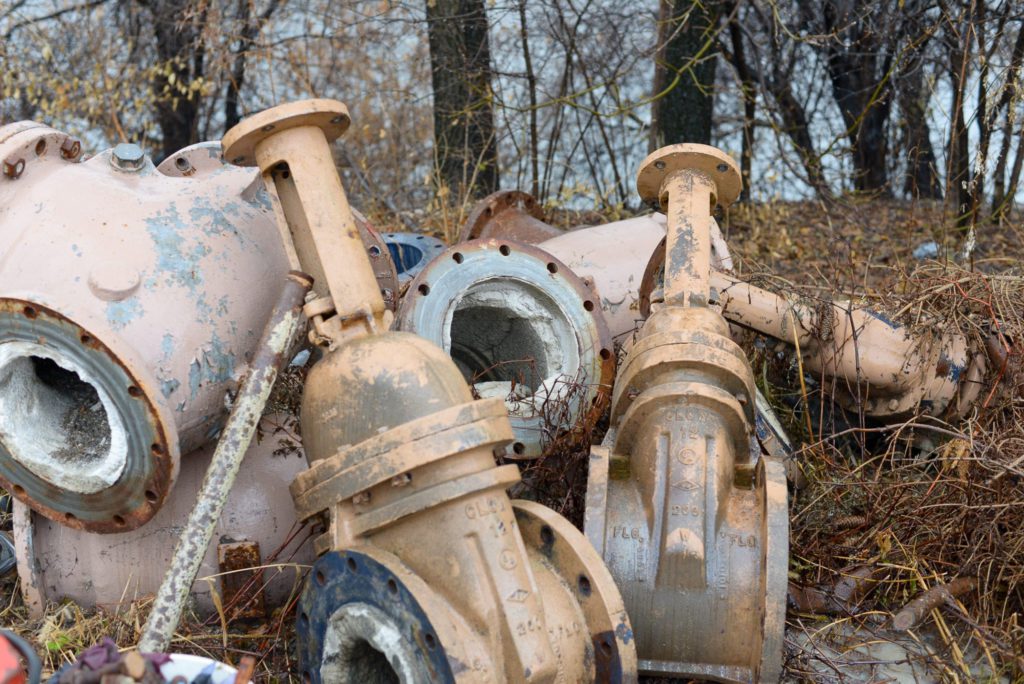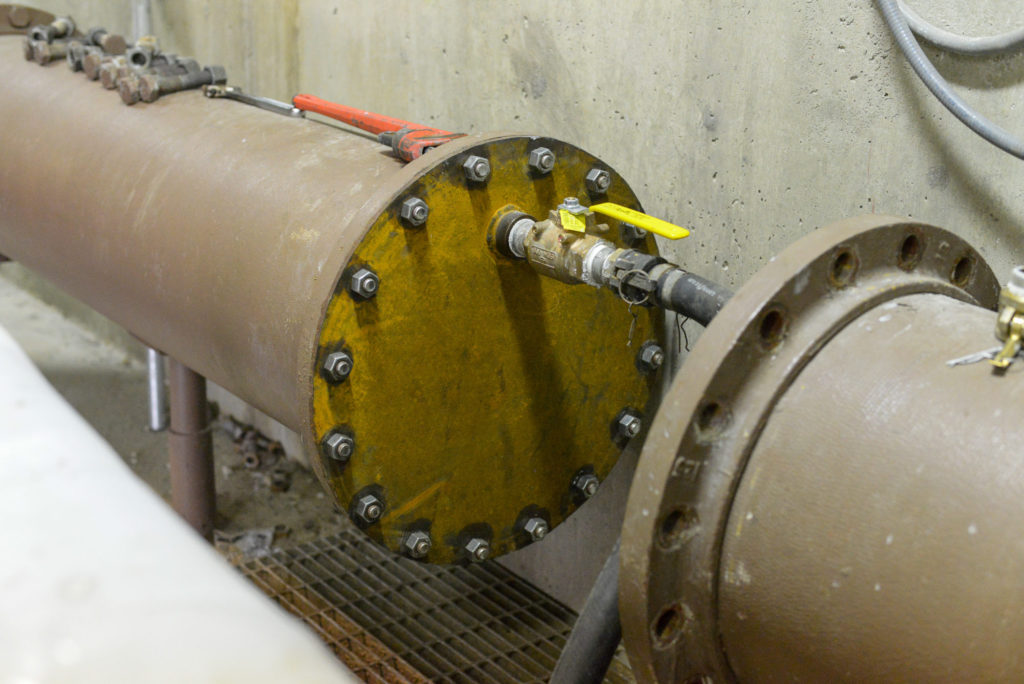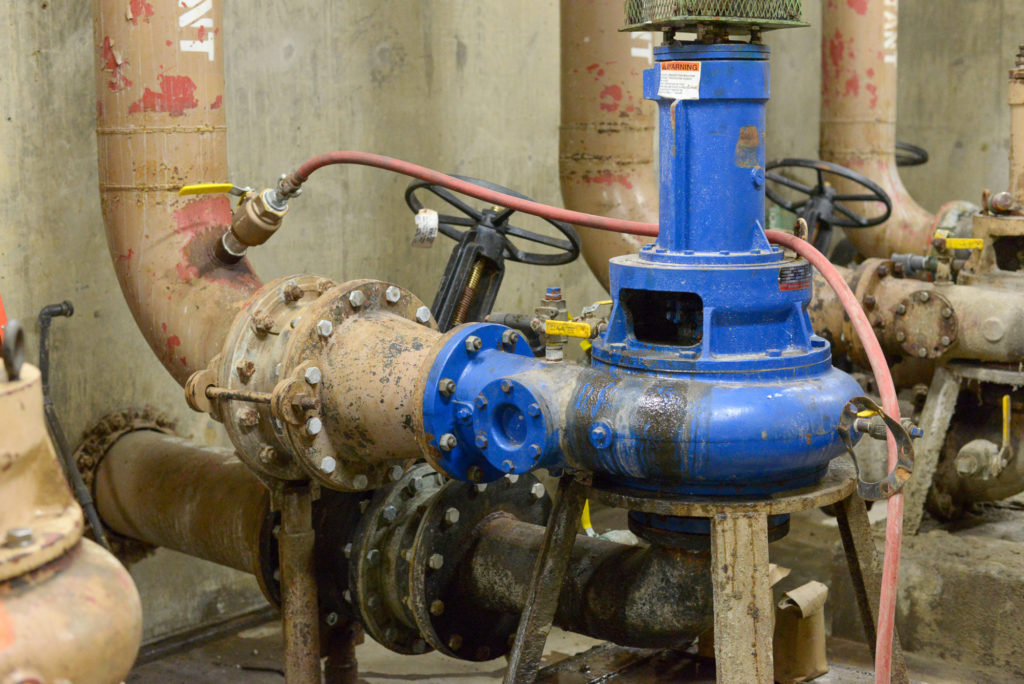How to Remove Struvite using RYDLYME

Reduced flow rates in wastewater treatment plant pipes, pumps, and lines are common symptoms of struvite buildup. If this sounds like your wastewater treatment plant, keep reading on how to remove struvite. RYDLYME biodegradable descaler is the solution – don’t let expensive pieces of equipment become unusable like the photo!
RYDLYME is the safest, most efficient & easiest way to dissolve struvite or vivianite from your heat exchangers, piping, pumps, and other lines where mineral deposits or harder water scale can form.
How to Remove Struvite with RYDLYME:
RYDLYME is extremely effective in struvite and vivianite removal from piping, pumps, transfer stations, screens, and other affected equipment in wastewater treatment plants. The amount of RYDLYME required will be dependent on the severity of the struvite or vivianite accumulation and the volume of the system to be cleaned.
Typically, RYDLYME will be applied at 50-100% depending on the thickness of the struvite or vivianite deposits to be removed. The preferred method of application is to circulate the RYDLYME solution through the pipe or equipment, but it can also be effective when utilized in a static or fill-and-soak application. Please see this video for circulation and this video for static cleaning.
How to Remove Struvite using RYDLYME in the Wastewater Industry
Apex highly recommends that, prior to cleaning, you contact us for technical assistance in determining the best dilution and method for removing your struvite or vivianite scale deposits.
- Obtain struvite or vivianite deposit for testing with RYDLYME to confirm adequate concentration to dissolve struvite (typically 50-100%). Note the severity of struvite build-up. Obtain the current water volume of the struvite infected system as well as the designed water volume.
- To set up a circulation, connect the circulating pump inlet to the vented container via a hose.
- Run another hose from the pump outlet to the lowest accessible point of the struvite or vivianite infected system.
- Run another hose from the highest accessible point of the struvite or vivianite-infected system back to the vented circulating container.
- Add the prescribed amount of RYDLYME to the circulating container and turn on the pump to begin dissolving struvite or vivianite. Add water to the solution until a complete circuit is obtained.
- Continue circulation for 6-12 hours depending on struvite or vivianite severity and volume of the system. Hourly monitor the RYDLYME solution to determine the endpoint. If RYDLYME is neutralized prior to the prescribed circulating duration, then more RYDLYME should be added in order to remove the remaining struvite. (See “Testing the Effectiveness of RYDLYME”)
- Upon completion of the struvite or vivianite cleaning, rinse the system with clean water to remove any insoluble materials that may have been released from the struvite deposit.
- Return the system to service.
How remove struvite using RYDLYME video
How to Remove Struvite or Vivanite using RYDLYME benefits:
- Biodegradable
- Dissolves 2.2 lbs of scale per gallon of RYDLYME
- NSF/ANSI 60 certified
- Non-corrosive and safe for personnel
- Less expensive, more effective and safer than hydro-blasting
- Over 80 years of proven success, other ‘descalers’ have much less experience
RYDLYME dissolving struvite from pipe
How to remove struvite using RYDLYME Case Studies
Municipal pumping station pipelines were severely clogged with struvite deposits which lead to pump motors running hot and check/gate valves unable to actuate.
A pharmaceutical developer’s wastewater system was experiencing flow issues caused by the collection of struvite scale deposits. Flow was restricted from 300 gpm to 60 gpm. Only 20% of design!



